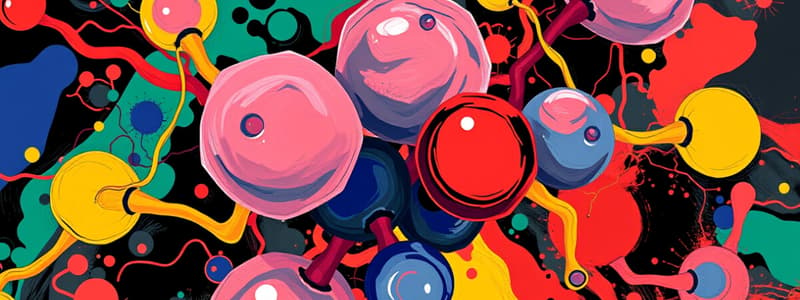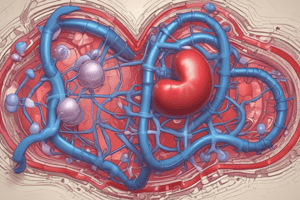Podcast
Questions and Answers
What is the one and only agent of digoxin?
What is the one and only agent of digoxin?
- ACE inhibitor
- Cardiac glycoside (correct)
- Calcium channel blocker
- Beta-blocker
What is digoxin used for?
What is digoxin used for?
Atrial fibrillation (rate control) and heart failure.
What is the mechanism of action (MOA) of digoxin?
What is the mechanism of action (MOA) of digoxin?
Inhibits Na/K-ATPase, which increases intracellular calcium.
What needs to be monitored when a patient is taking digoxin?
What needs to be monitored when a patient is taking digoxin?
What are signs and symptoms of early/mild digoxin toxicity?
What are signs and symptoms of early/mild digoxin toxicity?
What are signs and symptoms of late/worse digoxin toxicity?
What are signs and symptoms of late/worse digoxin toxicity?
What adverse drug reactions (ADRs) are associated with digoxin?
What adverse drug reactions (ADRs) are associated with digoxin?
What education would you need to provide to a patient who has been prescribed digoxin?
What education would you need to provide to a patient who has been prescribed digoxin?
What is the name of the antidote used for digoxin toxicity?
What is the name of the antidote used for digoxin toxicity?
When would the use of Digifab be indicated?
When would the use of Digifab be indicated?
What do you need to monitor with Digifab?
What do you need to monitor with Digifab?
Flashcards are hidden until you start studying
Study Notes
Digoxin Overview
- Digoxin is a cardiac glycoside, an essential agent in treating heart conditions.
Indications for Use
- Indicated for atrial fibrillation (for rate control) and heart failure management.
Mechanism of Action
- Inhibits Na/K-ATPase, resulting in increased intracellular calcium levels.
- Enhances heart contraction strength while slowing heart rate.
Monitoring Requirements
- Therapeutic levels must be monitored due to digoxin's narrow therapeutic range.
- Obtain levels 12-24 hours after the last dose, and 5-7 days after any dosage adjustments.
Early Signs of Digoxin Toxicity
- Gastrointestinal issues are the first indicator (nausea/vomiting).
- Other symptoms include anorexia, fatigue, malaise, dizziness, and visual disturbances (yellow/green).
Late Signs of Digoxin Toxicity
- Severe symptoms may include arrhythmias, hallucinations, hyperkalemia, and AV block.
- Life-threatening conditions can lead to cardiac arrest, ventricular fibrillation, or death.
Adverse Drug Reactions (ADRs)
- Commonly reported ADRs: headache, weakness, gastrointestinal disturbances, anorexia, and gynecomastia.
- Severe toxicity symptoms include arrhythmias and AV block.
Patient Education
- Educate patients on recognizing ADRs and early signs of toxicity; report symptoms immediately.
- Advise notifying healthcare providers about any new medications or changes in health status.
Antidote for Digoxin Toxicity
- Digifab is the specific antidote for digoxin toxicity.
Indications for Digifab Use
- Utilized for acute or chronic toxicity; indicated if digoxin levels exceed 10 ng/mL (acute) or 4-6 ng/mL (chronic).
- Necessary for any life-threatening symptoms of toxicity.
Monitoring with Digifab
- Monitor digoxin levels after several days to weeks post-treatment onset.
- During treatment, assess potassium levels, blood pressure, ECG, and temperature.
- Before Digifab administration, check potassium, digoxin concentration, and serum creatinine levels.
Studying That Suits You
Use AI to generate personalized quizzes and flashcards to suit your learning preferences.




